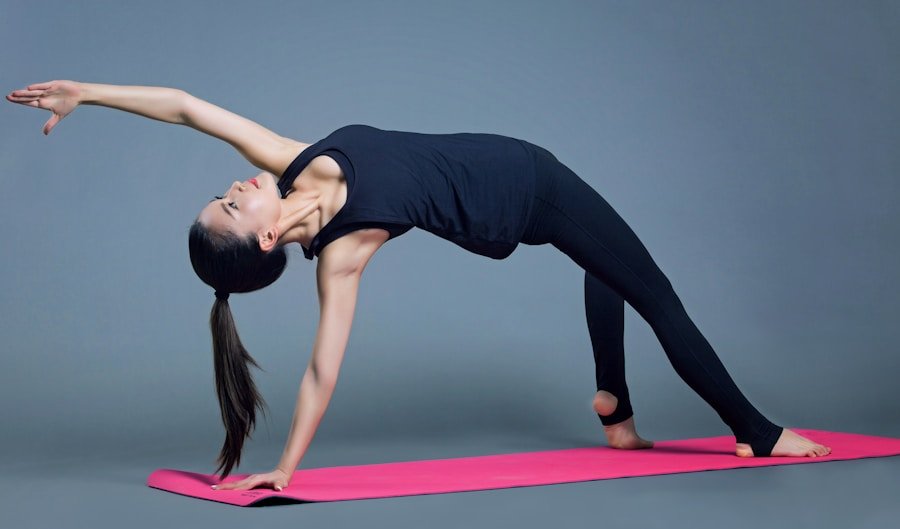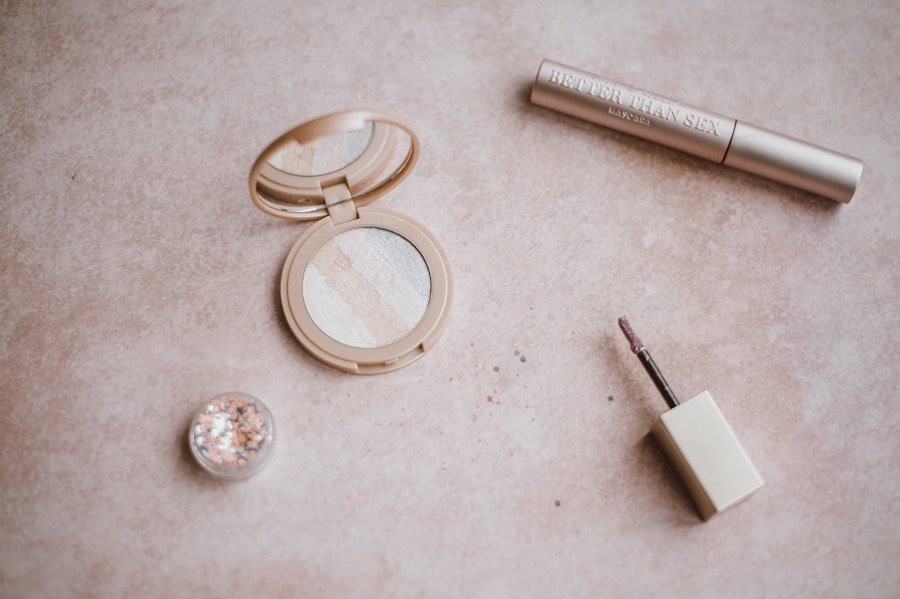When engaging in physical activity, having the appropriate fitness equipment is vital for preventing injuries and ensuring a safe and effective workout. Proper fitness gear provides support and protection for the body, enhancing performance while reducing the risk of injury. Regardless of whether you’re an experienced athlete or just starting your fitness journey, investing in the right gear is crucial for overall well-being.
One of the most critical components of fitness gear is a suitable pair of shoes. The type of shoes worn during exercise significantly impacts performance and the health of the feet, ankles, and knees. Wearing inappropriate shoes can lead to discomfort, pain, and even severe injuries such as sprains or fractures.
Furthermore, wearing the wrong shoes can affect posture and alignment, resulting in issues with the back and hips. Therefore, it is essential to select shoes specifically designed for the type of exercise being performed, whether it’s running, walking, or weightlifting. Another vital aspect of proper fitness gear is the clothing worn during exercise.
The right clothing helps regulate body temperature, wick away sweat, and provide support for muscles. It is essential to choose clothing made from breathable and moisture-wicking materials to prevent chafing and irritation. Additionally, wearing the right clothing helps prevent muscle strains and injuries by providing support and compression where needed.
Overall, investing in the right fitness gear, including shoes and clothing, is essential for preventing injuries and ensuring a safe and effective workout.
Key Takeaways
- Proper fitness gear is essential for preventing injuries during exercise
- Choosing the right shoes is crucial for injury prevention during workouts
- Clothing plays a significant role in preventing injuries during exercise
- Supportive equipment can help ensure safe workouts and prevent injuries
- It is important to properly fit, adjust, maintain, and replace exercise equipment for injury prevention
Choosing the Right Shoes for Exercise
Understanding the Importance of Proper Footwear
When it comes to preventing injuries during exercise, choosing the right shoes is crucial. The type of shoes you wear can have a significant impact on your performance and the health of your feet, ankles, and knees.
Selecting Shoes for Your Specific Exercise Routine
For example, if you are a runner, it is important to choose running shoes that provide cushioning and support for your feet. Running shoes are designed to absorb impact and provide stability, which can help to prevent injuries such as shin splints or stress fractures. On the other hand, if you are a weightlifter, it is important to choose shoes with a flat sole and good ankle support to provide stability and prevent injuries while lifting heavy weights.
Ensuring a Proper Fit
In addition to choosing the right type of shoes for your specific exercise routine, it is also important to ensure that your shoes fit properly. Ill-fitting shoes can lead to discomfort, pain, and even serious injuries such as blisters or bunions. When trying on shoes, it is important to consider factors such as the width of your foot, the arch support, and the length of the shoe. It is also important to try on shoes at the end of the day when your feet are at their largest to ensure a proper fit.
The Key to a Safe and Effective Workout
Overall, choosing the right shoes for exercise is essential for preventing injuries and ensuring a safe and effective workout.
Understanding the Role of Clothing in Injury Prevention
The clothing you wear during exercise plays a crucial role in injury prevention. The right clothing can help to regulate your body temperature, wick away sweat, and provide support for your muscles. For example, wearing moisture-wicking clothing can help to prevent chafing and irritation by keeping your skin dry during intense workouts.
Additionally, wearing compression clothing can help to improve blood flow and reduce muscle soreness, which can help to prevent injuries such as strains or sprains. In addition to providing support and protection for your muscles, the right clothing can also help to prevent injuries by providing visibility and protection from the elements. For example, wearing bright and reflective clothing can help to make you more visible to drivers and other pedestrians when exercising outdoors, reducing the risk of accidents or collisions.
Additionally, wearing clothing that provides protection from the sun’s harmful UV rays can help to prevent sunburns and skin damage during outdoor workouts. Overall, choosing the right clothing for exercise is essential for preventing injuries and ensuring a safe and effective workout.
Utilizing Supportive Equipment for Safe Workouts
| Exercise Gear | Importance |
|---|---|
| Proper Footwear | Provides support and stability, reduces risk of foot and ankle injuries |
| Moisture-wicking Clothing | Helps to keep the body dry and prevent chafing and irritation |
| Compression Gear | Improves circulation, reduces muscle soreness and fatigue |
| Protective Eyewear | Prevents eye injuries from flying debris or impact during sports |
In addition to choosing the right shoes and clothing for exercise, utilizing supportive equipment can also help to prevent injuries and ensure a safe workout. Supportive equipment such as knee braces, wrist wraps, and weightlifting belts can provide additional support and stability for your joints and muscles during intense workouts. For example, wearing a knee brace can help to provide support and reduce the risk of injury during activities such as running or jumping.
Additionally, wearing wrist wraps can help to provide stability and prevent injuries during activities such as weightlifting or gymnastics. When choosing supportive equipment for exercise, it is important to consider factors such as fit, comfort, and functionality. It is important to choose equipment that fits properly and does not restrict movement or cause discomfort.
Additionally, it is important to choose equipment that provides the right level of support for your specific needs. For example, if you have a history of ankle injuries, wearing ankle braces or supports can help to provide additional stability and prevent future injuries. Overall, utilizing supportive equipment for exercise is essential for preventing injuries and ensuring a safe and effective workout.
Properly Fitting and Adjusting Fitness Gear
Properly fitting and adjusting fitness gear is essential for preventing injuries during exercise. Ill-fitting gear can lead to discomfort, pain, and even serious injuries such as strains or sprains. When it comes to choosing fitness gear such as shoes or clothing, it is important to consider factors such as fit, comfort, and functionality.
For example, when trying on shoes, it is important to ensure that they fit properly and provide the right level of support for your specific needs. Additionally, when choosing clothing for exercise, it is important to ensure that it fits properly and does not restrict movement or cause discomfort. In addition to choosing gear that fits properly, it is also important to adjust your gear as needed during exercise.
For example, if you are wearing a weightlifting belt or wrist wraps, it is important to ensure that they are adjusted properly to provide the right level of support without restricting movement. Additionally, if you are wearing compression clothing or braces, it is important to ensure that they are adjusted properly to provide the right level of compression without causing discomfort or restricting blood flow. Overall, properly fitting and adjusting fitness gear is essential for preventing injuries and ensuring a safe and effective workout.
Maintaining and Replacing Exercise Equipment
Worn-Out Equipment: A Recipe for Disaster
For instance, running shoes with worn-out cushioning or tread can increase the risk of impact-related injuries like shin splints or stress fractures. Similarly, compression clothing that has lost its elasticity or support can increase the risk of muscle strains or sprains.
Regular Inspection: The Key to Prevention
To prevent injuries due to worn-out equipment, it is essential to regularly inspect your exercise gear for signs of wear and tear. When inspecting running shoes, check for worn-out cushioning or tread that may indicate the need for replacement. Similarly, when inspecting compression clothing or braces, look for signs of lost elasticity or support that may indicate the need for replacement.
A Safe and Effective Workout
Overall, maintaining and replacing exercise equipment is vital for preventing injuries and ensuring a safe and effective workout. By taking the time to inspect and replace your equipment regularly, you can minimize the risk of injury and maximize the benefits of your exercise routine.
Tips for Preventing Injuries During Exercise
In addition to choosing the right fitness gear and utilizing supportive equipment, there are several tips that can help to prevent injuries during exercise. One of the most important tips for preventing injuries is to warm up properly before starting any workout. Warming up helps to prepare your muscles and joints for exercise by increasing blood flow and flexibility, which can help to prevent strains or sprains.
Additionally, cooling down after a workout can help to reduce muscle soreness and prevent injuries by allowing your body to gradually return to its resting state. Another important tip for preventing injuries during exercise is to listen to your body and avoid pushing yourself too hard. Overtraining or pushing yourself beyond your limits can increase the risk of overuse injuries such as tendonitis or stress fractures.
It is important to pay attention to any signs of pain or discomfort during exercise and take breaks as needed to prevent injury. Additionally, it is important to gradually increase the intensity or duration of your workouts over time to allow your body to adapt and prevent overuse injuries. In conclusion, preventing injuries during exercise requires choosing the right fitness gear, utilizing supportive equipment, properly fitting and adjusting gear, maintaining and replacing equipment as needed, and following tips for injury prevention.
By investing in the right fitness gear such as shoes and clothing designed for your specific needs, utilizing supportive equipment such as braces or wraps as needed, ensuring that gear fits properly and provides the right level of support without causing discomfort or restriction of movement, regularly inspecting gear for signs of wear and tear and replacing as needed, warming up properly before workouts, listening to your body and avoiding overtraining or pushing yourself too hard; you can help prevent injuries during exercise and ensure a safe and effective workout. By taking these steps to prevent injuries during exercise, you can enjoy all the benefits of physical activity without putting yourself at risk for unnecessary harm.
FAQs
What is the importance of proper fitness gear use in preventing injuries during exercise?
Proper fitness gear use is important in preventing injuries during exercise as it provides support, stability, and protection to the body. Wearing the right gear can help reduce the risk of strains, sprains, and other exercise-related injuries.
What are some examples of proper fitness gear?
Examples of proper fitness gear include supportive athletic shoes, moisture-wicking clothing, compression sleeves or braces for joint support, and protective gear such as helmets for certain activities like cycling or skating.
How can wearing the right fitness gear help prevent injuries?
Wearing the right fitness gear can help prevent injuries by providing proper support to the body, reducing impact on joints, improving stability and balance, and protecting vulnerable areas from potential harm during exercise.
What are the potential consequences of not using proper fitness gear during exercise?
Not using proper fitness gear during exercise can lead to an increased risk of injuries such as muscle strains, ligament sprains, joint pain, blisters, and other discomforts. It can also result in long-term damage to the body if not addressed properly.
How can individuals ensure they are using the right fitness gear for their exercise routine?
To ensure they are using the right fitness gear, individuals should consult with fitness professionals, such as personal trainers or sports medicine experts, to get recommendations based on their specific exercise routine, body type, and any existing health conditions. They should also consider the specific requirements of their chosen activity and invest in high-quality gear that fits properly.














